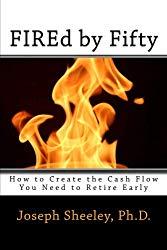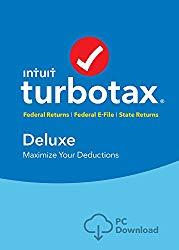One of the main advantages in long-term investing is the ability to delay capital gains taxes. As a company becomes more valuable and increases in price as a result, as long as you don’t sell and realize a capital gain, your investment can keep growing without you needing to pay taxes on the increase in value. This allows the money you would have been paying in taxes to compound and grow more income for you. This is true even in a taxable account.
(Note, this site contains affiliate links. When you click on an affiliate link and buy something, The Small Investor will get a small commission for the referral. You are charged nothing extra for the purchase. This helps keep The Small Investor going and free. I don’t recommend any products I do not fully support. If you would like to help but don’t see anything you need, feel free to visit Amazon through this link and buy whatever you wish. The Small Investor will get a small commission when you do, again at no cost to you.)
You realize the best tax advantages when you invest for the long-term and rarely sell your positions. If you don’t need the money and the company continues to grow and become more profitable, there is no reason to sell shares and realize gains. This means your investments grow tax-deferred. If you don’t sell your whole life and never realize the gain, provided your total estate is below a threshold amount, you might never need to pay taxes on the gains at all.
But even if you do sell stocks and pay capital gains taxes regularly, there is a tax advantage to holding stocks for more than a year. While this rule changes from time to time, currently you will pay between 0% and 20% in capital gains taxes for long-term gains and ordinary tax rates for short-term gains. Note that for some reason it is thought that those who invest for long periods of time are helping society and therefore deserve a lower rate than those jumping from stock-to-stock, or perhaps politicians are trying to encourage people to invest for longer periods of time since this is a good thing to do. In any case, there is currently an advantage to long-term holding, meaning holding stocks for a year or more before selling and realizing a gain will lower your taxes.

FIREd by Fifty: How to Create the Cash Flow You Need to Retire Early
But what if you buy a stock and it shoots through the roof in a couple of months? Maybe you planned to hold it long-term, but now the price is so high that you worry it will sit there for years, waiting for earnings to catch up or perhaps even fall back to earth once the excitement dies down. Or maybe you need the money in a year, but know your income will be a lot less next year than this year, so you want to move the gain by a few months and reduce your tax burden. (Note, all of this could be avoided if the Fair Tax were enacted. Please read my posts on the Fair Tax and support it so we can get back to worrying about investing instead of taxes.) In general the best thing to do is to just sell the stock since the price can easily drop enough to wipe out any tax savings you would have had. Nevertheless, today I thought I would provide some ways to delay the realization of capital gains.
As with anything tax related, please check with a CPA or do your own review of the rules at the IRS website, rather than believing some guy on a the internet. These rules change all of the time.

TurboTax Deluxe + State 2018 Tax Software [PC Download] [Amazon Exclusive]
Using Put Options to Insure Your Gains
The first method to prevent a loss is to buy a put option on the stock. This is an insurance policy that guarantees that you can sell the stock for a certain price, called the strike price, on or before a certain date, called the expiration date. For example, let’s say that you own 1000 shares of IBM, which is currently trading for about $180 per share, and wanted to hold it through next December to put your gain into 2015 instead of 2014. Looking at the options for IBM, you could buy an IBM January 2015 Put Option with a strike price of $180 for about $1200 per 100 shares, or about $12,000 for all 1000 shares, valued at $180,000.
This would allow you to sell your shares to whomever sold you the put option for $180 per share no matter the price at which the stock was trading. You could do this anytime between now and the third Friday in January. At that point, if you did not sell the shares using the put option, the option would expire worthless (you are paying for an insurance policy). If the stock went up to $250 in the mean time, you could just hold onto the shares and sell them for $250, letting the put expire. If the price fell to $100 per share, however, you could still sell the shares for $180 each in January by exercising the put option. If you wanted some protection but didn’t want to pay $12,000, you could also buy the January $170 puts for $8.00 per share, or about $8,000 to cover the 1000 shares. This would allow you to sell the shares for $170 per share, which would result in a little more of a loss if the share price did fall, but would allow you to keep more of the gain if the share price held up between now and January. This is kind of like having a higher deductible on your car insurance, which means you pay more if there is an accident but you save money when there is not.

Investing QuickStart Guide: The Simplified Beginner’s Guide to Successfully Navigating the Stock Market, Growing Your Wealth & Creating a Secure Financial Future
Selling Short Against the Box
A second method is to do what is called selling short against the box. In this strategy you tell your broker you would like to sell short against the box the same number of shares as you hold long. You would then keep both positions open until the point at which you wanted to realize the gain, at which point you would tell your broker you wanted to liquidate the position. He would then cause the two positions to cancel each other out and you would effectively have sold the shares. (Note that this has no reason for existence other than to delay capital gains for taxes and some lawmaker may have changed to rules to disallow this transaction; therefore, check with your CPA and/or your broker before trying this maneuver.)

Want all the details on using Investing to grow financially Independent? Try The SmallIvy Book of Investing.
As an example, let’s return to our holder of 1000 shares of IBM. He would tell his broker that he wanted to sell short 1000 shares of IBM against the box. His broker would borrow the shares and sell them, putting an entry for 1000 shares of IBM short in the investor’s account. From that point if the stock went down in price, the short sale profit would exactly cancel the growing loss on the shares held long. Likewise, if the stock went up in price the loss on the short sale would be cancelled out by the gain on the shares held long.
There are issues and a cost to this strategy as well. Selling the shares short will result in additional commissions and fees that the investor would not need to pay if he just sold the shares instead. The short sale would also result in a possible margin position. For example, if the stock increased in price and there was not sufficient cash in the account to cover the value of the short sale, the brokerage firm would start charging margin interest for the uncovered value of the short sale. If the stock rose high enough the brokerage firm might make a margin call, forcing the investor to come up with more cash to cover a larger portion of the amount of the short sale or close the position early.
As said before, it is usually best to just sell the shares and pay the taxes. If the tax savings will be large enough, however, such as for someone in the top tax bracket where the income taxes would be around 40% for a short-term gain versus 20% for a long-term gain, using one of the above strategies may be worth consideration.
If you enjoy The Small Investor and want to support the cause, or you just want to learn how to become financially independent, please consider picking up a copy of my new book, FIREd by Fifty: How to Create the Cash Flow You Need to Retire Early This is the instruction manual on how to become financially independent.
Have a burning investing question you’d like answered? Please send to [email protected] or leave in a comment.
Follow on Twitter to get news about new articles. @SmallIvy_SI
Disclaimer: This blog is not meant to give financial planning or tax advice. It gives general information on investment strategy, picking stocks, and generally managing money to build wealth. It is not a solicitation to buy or sell stocks or any security. Financial planning advice should be sought from a certified financial planner, which the author is not. Tax advice should be sought from a CPA. All investments involve risk and the reader as urged to consider risks carefully and seek the advice of experts if needed before investing.
